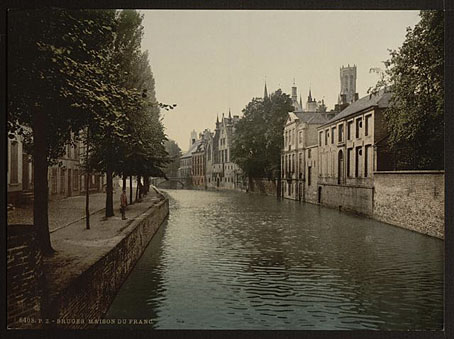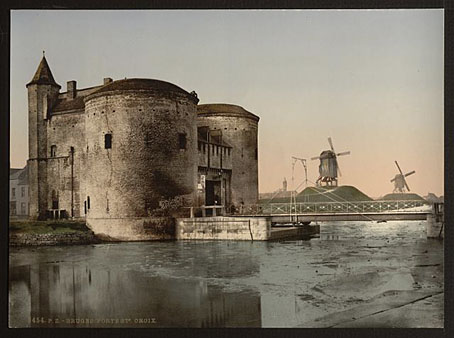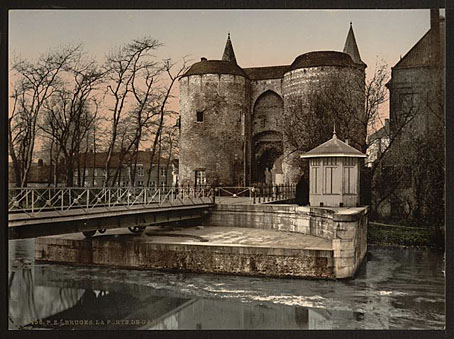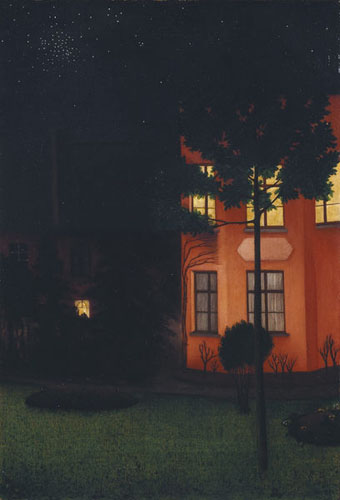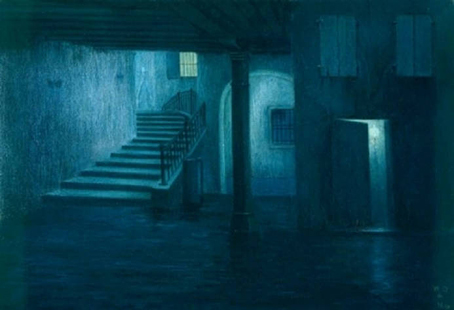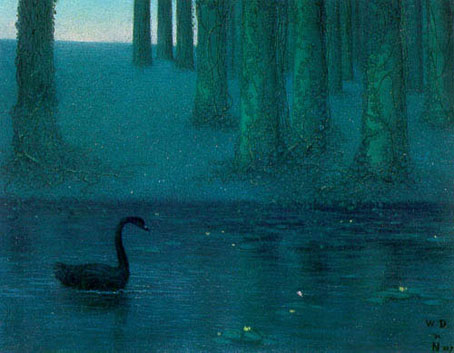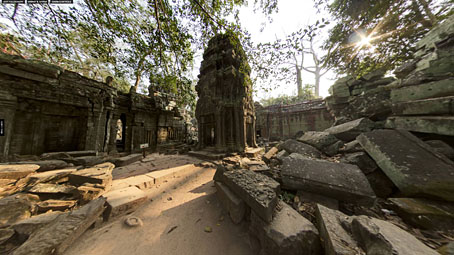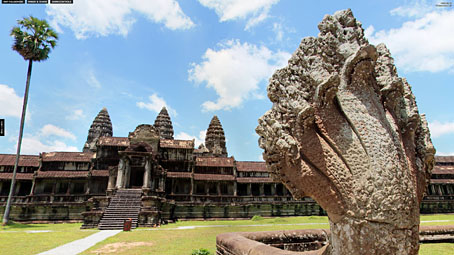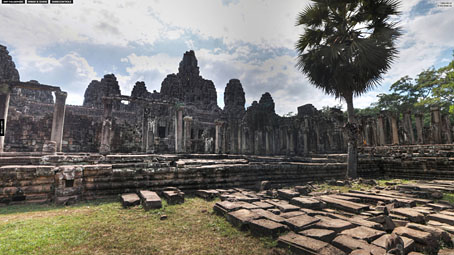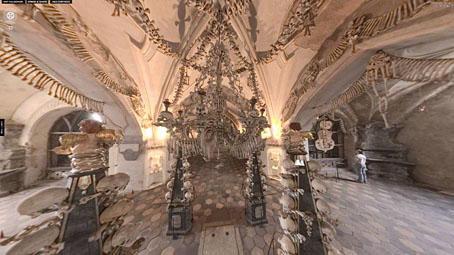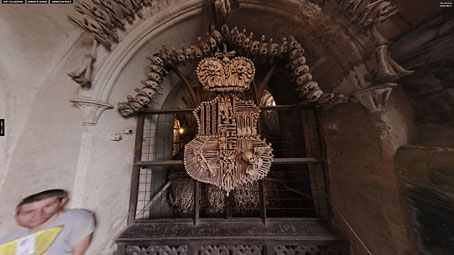Maison du France.
I’ve looked through the Library of Congress collection of photochrom prints many times but somehow never noticed the 20 or so prints of Bruges until now. The Belgian Symbolists recorded their fascination with the Belgian town in paintings, drawings, photographs and Georges Rodenbach’s novel, Bruges-la-Morte (1892). The latter came illustrated by photographs that showed the town’s depopulated streets and empty canals, an early example of a novel using photography to support its text. Rodenbach’s photographs are all black-and-white, of course, and not the greatest quality (see this copy of the book). These photochrom prints may not be strictly accurate in their colours but they date from the same period as Rodenbach’s pictures; they also contain much more detail, and many of them replicate Rodenbach’s views. The ones here show the canals and gates but the library archive includes several views of the squares and the famous medieval Belfry of Bruges.
St. Croix Gate.
Ghent Gate.

